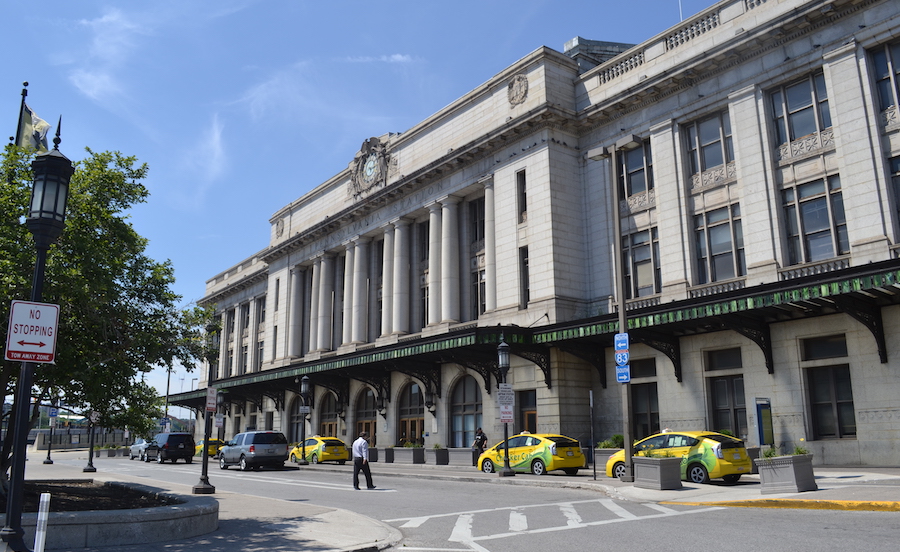The $90-million redevelopment of Baltimore’s historic Penn Station is moving forward despite dips in ridership and revenue due to the coronavirus pandemic for Amtrak, whose officials anticipate losing more than $700 million in adjusted operating earnings in fiscal 2020 and report a 95% reduction in riders.
Redeveloping Amtrak's eighth busiest station is “critical,” Stephen Gardner, a senior executive vice president of the rail line, said in a statement.
The numbers expected this year follow records set for ridership and operating revenue in fiscal 2019, which ended last Sept. 30, the railroad said in December, with a $29.8-million announced operating loss its lowest ever. Amtrak had expected at that time to break even in fiscal 2021.
The rail line last month received $1-billion in federal funds from the U.S. Transportation Dept. under the CARES Act, with about half earmarked for the Northeast corridor. Transportation Secretary Elaine Chao said the funds would "maintain service for ... passengers when the economy recovers.”
Amtrak has suspended its Acela rail service and cut more than half of its U.S. train trips. CEO William Flynn, who started in the role on April 15 from a prior position as chairman and CEO of air freight firm Atlas Air Worldwide Holdings Inc., told media on April 23 that while "the numbers seems to be steady at this point," he could not predict how soon passenger volume would improve.
The multi-phased Baltimore project is expected to break ground in the next 18 months, according to Timothy P. Davis, senior planning manager at WSP USA. The firm is designing the project in joint venture with Gensler. With 15% of design complete, phased portions of the project are expected to be out to bid “any day now” with the rest expected this summer, Davis said. The imminent phase due date for bids has not yet been set.
Vaki Mawema, principal and managing director of Gensler, said designing a train station expansion around maintaining full operational stability is challenging, making it “critical to bring a respect for and sensitivity to this design,” noting that the structure, completed in 1911 is a noted city landmark. “Being a high profile, public-facing project, we’ve been working to keep the focus on building the best project for the city of Baltimore."
The project involves building a passenger concourse on the north side of the tracks, with increased space for passenger waiting areas and new entrances from both Charles and St. Paul Streets fronting on landscaped plazas. The concourse will house new ticketing and customer service facilities, as well as a Metropolitan Lounge for first-class and frequent Amtrak travelers.
Plans also call for restoration of the existing historic headhouse into a boutique hotel, additional office and retail space, improved information systems for passengers and patrons and expanded track and platform capacity. “The goal of the project is to make Baltimore Penn Station future ready for the next generation of high-speed rail, and the new center of a revitalized neighborhood,” said Samuel F. Minnitte Jr., WSP vice president and area manager for Maryland and Delaware.
The plaza in front of the headhouse will be reconfigured to allow the station to be more accessible to pedestrians and bicyclists. “The historic headhouse building is a masterpiece of architecture; its cultural impact and significance is huge,” said Peter Stubb, Gensler principal and design director. “It will remain the same except for a change in function,” he said.
Station operations will move to the new expansion on the other side of the tracks, connected by the existing concourse. “We want to enhance the historic headhouse by complementing it with a beautiful modern expansion that responds to the operational and technological needs of today,” Stubb said.
Amtrak has already invested $50 million in the project, according to railroad officials.
“We continue to advance projects where we are able,” Gardner said, “although we understand there could be delays due to supply chain issues, workforce availability and other similar challenges that companies across the U.S. are facing.”



Post a comment to this article
Report Abusive Comment